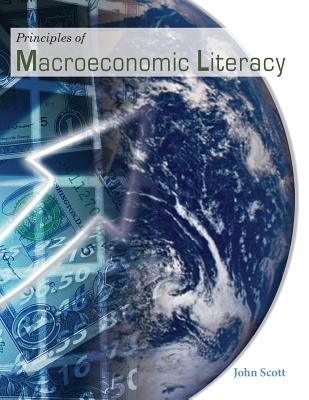
- We will send in 10–14 business days.
- Author: John Scott
- Publisher: University of North Georgia
- Year: 2015
- ISBN-10: 1940771188
- ISBN-13: 9781940771182
- Format: 21.6 x 27.9 x 1.1 cm, minkšti viršeliai
- Language: English
- SAVE -10% with code: EXTRA
Reviews
Description
Principles of Macroeconomic Literacy emphasizes basic economic concepts such as value and cost in developing macroeconomic ideas. Besides the economics of Adam Smith, Freidrich Hayek, and Milton Friedman, the text applies the work of James Buchanan in discussing how ideal policies will never be ideally applied by self-interested politicians with limited knowledge. The text integrates Frederic Bastiat's (1950) essay, "That Which is Seen and That Which is Not Seen," in discussing issues such as technology, trade, government guaranteed loans, and Keynesian fiscal policy. Students learn concepts involving credit markets, economic planning, and money through short fictional stories in which characters interact in an attempt to make themselves better off. Where many texts put the student in the position of an imagined macroeconomic policy dictator, Principles of Macroeconomic Literacy attempts to make macroeconomics comprehensible to students who live every day in the macroeconomy.
EXTRA 10 % discount with code: EXTRA
The promotion ends in 23d.02:46:19
The discount code is valid when purchasing from 10 €. Discounts do not stack.
- Author: John Scott
- Publisher: University of North Georgia
- Year: 2015
- ISBN-10: 1940771188
- ISBN-13: 9781940771182
- Format: 21.6 x 27.9 x 1.1 cm, minkšti viršeliai
- Language: English English
Principles of Macroeconomic Literacy emphasizes basic economic concepts such as value and cost in developing macroeconomic ideas. Besides the economics of Adam Smith, Freidrich Hayek, and Milton Friedman, the text applies the work of James Buchanan in discussing how ideal policies will never be ideally applied by self-interested politicians with limited knowledge. The text integrates Frederic Bastiat's (1950) essay, "That Which is Seen and That Which is Not Seen," in discussing issues such as technology, trade, government guaranteed loans, and Keynesian fiscal policy. Students learn concepts involving credit markets, economic planning, and money through short fictional stories in which characters interact in an attempt to make themselves better off. Where many texts put the student in the position of an imagined macroeconomic policy dictator, Principles of Macroeconomic Literacy attempts to make macroeconomics comprehensible to students who live every day in the macroeconomy.


Reviews